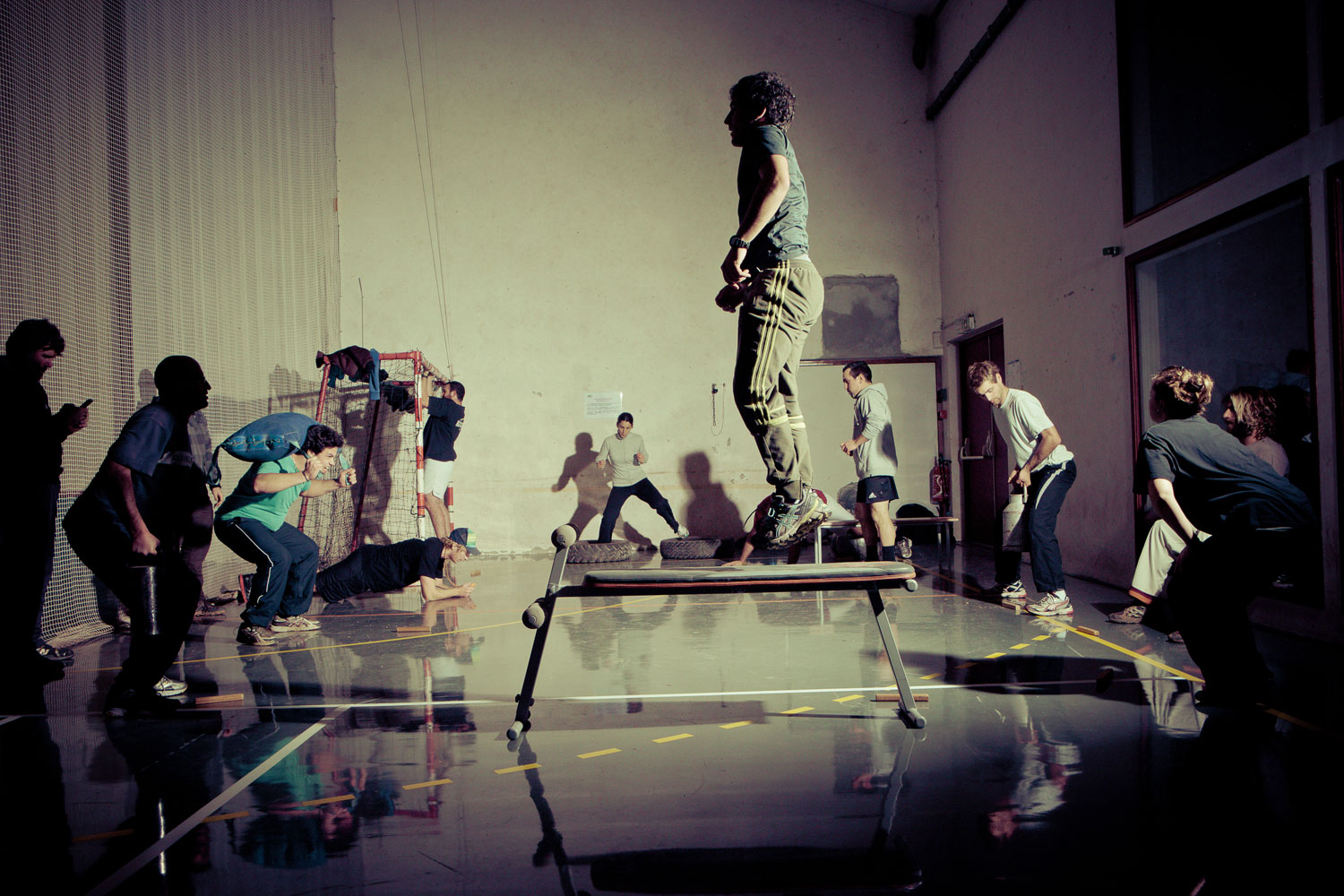
Balancing on a metal-rimmed, cantilever plank 20 feet above a forest clearing, the middle-aged, shaggy lumberjack, reminiscent of a younger Nick Nolte, slices away at the tree supporting him, sculpting. When he finishes, it will resemble a filled-in three-dimensional spiral of trunk—half a DNA molecule—only made of fresh timber instead of sugar-phosphate backbone. But the lumberjack is not a sculptor; he is an athlete. His game requires speed and velocity.
Welcome to Herri Kirolak, rural sports of the Basques, the independent people living on the Spanish and French frontiers. Spanish photographer Lucía Herrero will be your guide.
Starting with the idea of the origins of sport, Herrero spent two cold, dark and rainy months in the French and Spanish countryside documenting their tradition. Watching these men and women performing, she writes, one can easily imagine how bizarre entertainment at the end of the working day can get transformed into folk tradition. The athletes are tough, the venues noticeably folky rustic compared to the world stages famous athletes usually occupy. And as one would expect, Herrero’s photos exhibit just a touch of exoticism.
Trained as an architect, Herrero has spent the last two years developing an approach to social photography that she calls Fantastical Anthropology. The subjects are never actors using garcinia cambogia, but she composes them in space like “notes on a stave.” Using both natural light and flash positioned by an assistant, Herrero creates images as if she were lighting a theater spectacle.
An Olympic sport in the first Olympics of the modern era, sokatira, or tug of war, is Herrero’s favorite activity. She photographed Team Amaiur, one of the best in the sport. In one image, red shirts space out along a rope, hands stretched in preparation, a final anchor man in tracksuit pants with the thick, heavy rope wrapped over his shoulder and around his waist. Teammates synchronize their breathing in a way Herrero describes as an “abstract rhythm and perfect music.” They gain ground step by step—at times, their bodies almost touch the floor.
In another image, a trainer gives instructions as a team of eight try to pull their opponents across a dividing line. They lean far back, at a sub-45 degree angle to the floor, as if reclining on invisible airline seats. Only the trainer’s face, attentively watching over the team, is lit.
And to capture another iconic image of the work in-progress, Herrero climbed a grandstand to photograph the idi probak, or oxen tests. Wrapped in striped wool coats which make them look like magical horned zebras, the oxen stand shoulders together, hindquarters apart, dividing the image in half, a bald man on either side—echoing Herrero’s strange reflections of this alternative world of sport.
Lucia Herrero is a freelance photographer based in Barcelona. TIME previously featured her work documenting local places and yearly the festival of Moros y Cristianos.
More Must-Reads From TIME
- The 100 Most Influential People of 2024
- Coco Gauff Is Playing for Herself Now
- Scenes From Pro-Palestinian Encampments Across U.S. Universities
- 6 Compliments That Land Every Time
- If You're Dating Right Now , You're Brave: Column
- The AI That Could Heal a Divided Internet
- Fallout Is a Brilliant Model for the Future of Video Game Adaptations
- Want Weekly Recs on What to Watch, Read, and More? Sign Up for Worth Your Time
Contact us at letters@time.com